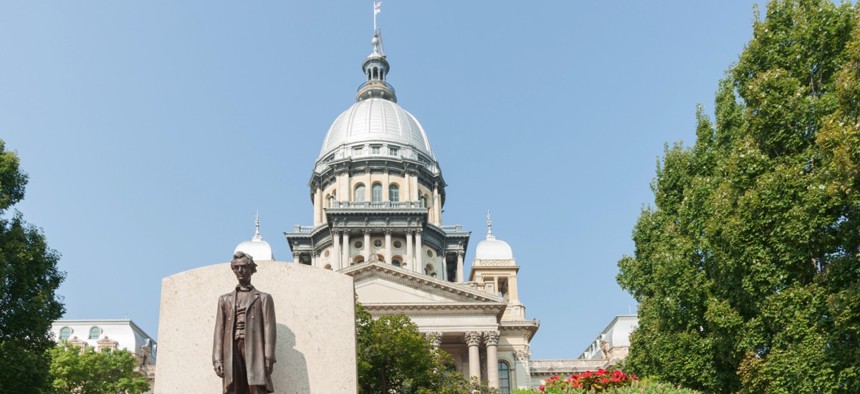Case Study: Making Sense of ‘Smart State’ Efforts Underway in Illinois

Illinois State Capitol

Connecting state and local government leaders
Budgetary crisis aside, the Department of Innovation & Technology is finding ways to to innovate and transform its operations.
Illinois has lost more residents than any other state over the last three years. It’s dealing with an ongoing budget standoff between its Republican governor, Bruce Rauner, and the Democratic-controlled legislature. But Illinois is also considered a leader of the “smart state” movement.
Hardik Bhatt, Illinois’ chief information officer, is the first to admit his state is difficult to work in and with, but it’s his mission to bring IT systems up to speed by the end of Gov. Bruce Rauner’s first term in 2019.
It helps, Bhatt said, that Rauner has a private-sector background in venture capital and private equity plus has sat on government advisory boards the last two years looking at ways to shift IT away from specialists and agency silos and more toward collaboration.
“We’re improving the business of state using technology,” Bhatt said Thursday afternoon during a webinar, “Smarter Illinois: Innovation Under Constraints,” hosted by FedInsider.
That’s Bhatt’s definition of smart government, which Illinois began with a comprehensive cybersecurity assessment revealing “billions of unsecured, unencrypted records.” Multiple silos were identified between state departments, necessitating operational and organizational transformation.
That’s why, at the end of Rauner’s first year in office, all government technology offices were consolidated—hundreds of employees with different mandates and billions of dollars of spend—under the umbrella of the Department of Innovation & Technology.
Marian Cook, DIT’s chief strategy officer, thinks that move led the research firm International Data Corporation to recognize Illinois as a first-in-the-nation smart state in early 2016.
“This is not for cowards,” Cook said. “You need to look at every possible lever.”
An aggressive organizational overall, one which viewed the state itself as a silo, broke down barriers and led to the creation of enterprise strategies.

IT projects with poor return on investment were halted, and those that weren’t set 75-day milestones, or “sprints.”
“We did not even want to take a full quarter to make progress,” Bhatt said.
SAP financial accounting software was procured as a unified enterprise resource planning system that almost half of Illinois agency budgets were moved onto.
Bhatt’s team is moving aggressively on mobile, with Illinois FIRST rolling out one or more apps a month and setting a goal of getting 80 percent of interactions on mobile devices.
DIT is developing “360 views” of government customers for employees, coupled with predictive analytics to better serve them.
The National Governors Association is looking to scale Illinois’ smart state rate solution, whereby even the smallest municipalities can purchase, say, an adaptive control, LED-based streetlight contract for a flat fee. It’s all part of Illinois’ effort to be a platform and demand aggregator, Bhatt said.
Internally, virtual teams have formed “centers of excellence” for sharing IT best practices on IoT, analytics, blockchain, innovation and mobile to name a few. Unknown pockets of innovation have been discovered within agencies as a result and shared more broadly.
Illinois also unveiled the first-ever leadership development program for its CIOs.
Dave Nyczepir is a News Editor at Government Executive's Route Fifty and is based in Washington, D.C.

NEXT STORY: Local Government Associations Team Up Around Technology





